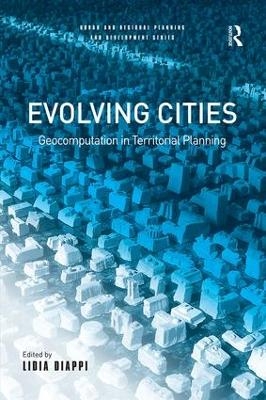
Evolving Cities
Routledge (Verlag)
978-1-138-26660-5 (ISBN)
Geocomputation has come of age. The whirlwind of change experienced in Geographical Information Science (GIS) - developments in IT, and new data gathering and earth observing technologies - has taken GIS beyond mere data and towards its analysis, modeling, and use in problem solving. Geocomputation is now at the dynamic edge of this revolution. Bringing together the leading researchers in geocomputation, this volume provides an up-to-date overview of the development of new artificial intelligence principles and technologies (NN, CA, Multi-agent Systems and Evolutionary Algorithms) used for the analysis, development and evaluation of urban planning policies and programmes. Charting the new approaches to data-processing, the book provides pointers on how to harness these technologies, advancing the knowledge level of planning by multiplying the information capacity of GIS, and offering a new approach to territorial modeling and micro-scale descriptions of socio-economic, behavioural and micro-spatial theories of urban processes and land use change.
Lidia Diappi is a Professor in the Department of Architecture and Planning at the Polytechnic of Milan, Italy.
Contents: Introduction, Lidia Diappi. The Spatial Investigation Capabilities of Neural Networks: Neural classifiers for land cover recognition: merging radiometric and ancillary information, Silvio Griguolo; Spatial interaction modelling: neural network methods and global optimization, Manfred Fischer and Katerina Hlavackova-Schindler; Complexity in sustainability: an investigation of the Italian urban system through self reflexive neural networks, Lidia Diappi, Massimo Buscema and Michela Ottanà . Land Use Dynamics Through Artificial Intelligence Tools: Knowledge discovery and data mining to investigate urban and territorial evolution: tools and methodologies, Francesco Bonchi, Silvana Lombardo and Serena Pecori; Learning about land use change in Rome and Pisa urban areas, Francesco Bonchi, Silvana Lombardo, Serena Pecori and Alessandro Santucci; The identification and simulation of the urban spatio-temporal dynamic: the case study of Rome, Ferdinando Semboloni; Appendix: an overview of the SSI handbook, Robert Gianassi; Land use dynamics: a stochastic forecasting model based on SOM neural nets knowledge, Lidia Diappi and Paola Bolchi. Multi Agent Systems: Interactions Among Actors and Their Behaviours: Multi agent simulations for traffic in regional planning, Kai Nagel and Bryan Raney; Traffic-related air pollution in an urban environment: a KBDSS for improving the decisional context, Emilia Conte and Grazia Concilio; The chaotic nature of urban neighbourhood evolution, Chris Webster; Index.
| Erscheinungsdatum | 04.03.2017 |
|---|---|
| Reihe/Serie | Urban and Regional Planning and Development Series |
| Verlagsort | London |
| Sprache | englisch |
| Maße | 156 x 234 mm |
| Gewicht | 453 g |
| Themenwelt | Naturwissenschaften ► Biologie ► Ökologie / Naturschutz |
| Naturwissenschaften ► Geowissenschaften ► Geografie / Kartografie | |
| Wirtschaft ► Betriebswirtschaft / Management ► Unternehmensführung / Management | |
| Wirtschaft ► Volkswirtschaftslehre | |
| ISBN-10 | 1-138-26660-4 / 1138266604 |
| ISBN-13 | 978-1-138-26660-5 / 9781138266605 |
| Zustand | Neuware |
| Informationen gemäß Produktsicherheitsverordnung (GPSR) | |
| Haben Sie eine Frage zum Produkt? |
aus dem Bereich


